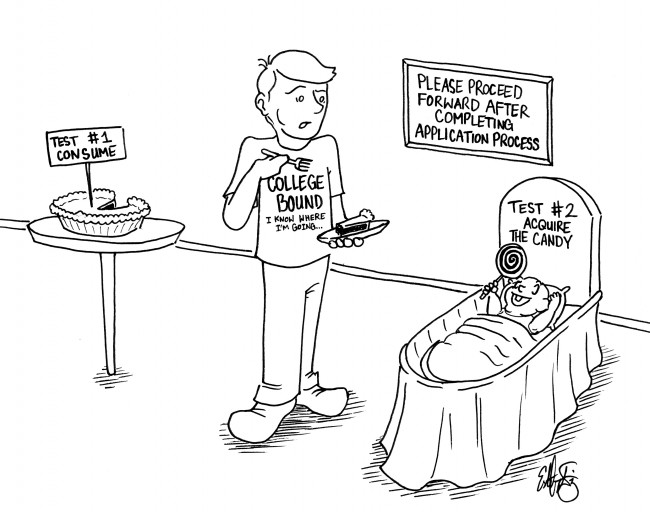“Welcome to Baylor” and “I know where I’m going” are phrases heard more and more frequently on Baylor’s campus and around the country due to the university’s evident push for more applicants.
According to data found in Volume 22 of “Baylor Trends,” a compilation of university information that determines trends in areas such as enrollment and tuition, the number of student applicants to Baylor noted a sharp increase in 2006, as did the number of students accepted.
Although more students are applying and being accepted now than ever before, data from Volume 20 of “Baylor Trends” shows that the university acceptance rate has actually decreased. In 2002, Baylor’s acceptance rate was approximately 81 percent, with 7,431 applicants and 6,028 accepted. The rate dropped drastically in 2006 to 42 percent, with 21,451 applying and 9,101 being accepted.
Every year since then, Baylor has maintained an acceptance rate between 40 and 50 percent. While the lower acceptance rate seems to suggest the university is being more selective, Baylor has nearly tripled the number of accepted students from 2002, with 16,316 being accepted in 2010.
This increase in applicants became apparent in 2006, when the online Baylor application – which waived the $50 application fee – was first introduced to students.
The Lariat editorial board wrote on Feb. 8, 2006, that “eliminating the application fee makes Baylor look as if it’s desperate for students and that the university has to do whatever it takes for high school seniors to consider applying.”
While this statement still stands true, we are more concerned today about how this large increase in applicants and acceptances impact the quality of students at Baylor as well as how it affects students who are caught in poor housing situations due to overcapacity.
The Baylor 2012 vision – the guiding force for all actions made by the university – may be the cause for the increase in numbers as it wishes to “attract and support a top-tier student body” by accepting an ethnically diverse student body of “high academic merit, Christian character, commitment to service and potential for leadership.”
While we applaud the administration’s efforts to diversify and raise the academic standard of the student body with this imperative, the steps being used to do this are not allowing for a complete picture of the applicant. Instead of setting a high academic admission standard, Baylor sends a mass of e-mails to high school seniors with a link to a quick online application that asks students to enter their SAT and/or ACT scores, complete a short questionnaire and answer a few short-answer questions.
There are no admissions essays, no fees. The university says it selects students primarily based upon academics and test scores, but how can admissions determine the quality and character of the student based on an impersonal application?
In addition, it is difficult to believe that Baylor intentionally chooses culturally diverse students based on strong character and values without gaining more specific knowledge of its applicants. Instead, it seems to imply that students are chosen simply based on an applicant’s ethnicity, which would contribute to the Baylor 2012 vision of a diverse student body.
Another imperative of the Baylor 2012 vision is to “create a truly residential campus” by making more “desirable residence halls available so that at least 50 percent of Baylor undergraduates are living on campus by 2012.”
This imperative has made significant progress, since 39 percent of undergraduates are reported to live on campus in 2010 as compared to 29 percent in 2002.
However, this percentage reflects an overcapacity of students since the Baylor 2012 progress report states that 4,651 beds were available when total occupancy was 4,734.
The overflow of 83 students were housed in expanded occupancy, which includes converted lounges in student residence halls and may soon include the currently unused basement of North Russell Residence Hall. This progress in on campus living was counteracted, however, by Baylor’s decision last year to pay undergraduates to move off campus in order to make room for the largest freshman class in the university’s history. To better determine the quality of applicants as well as the growing issue of overcapacity, Baylor should develop a more exhaustive application process and accept fewer applicants.
An in-depth application would deter students who are not serious about the mission of Christianity and academic integrity that was established in Baylor’s charter and would immediately guarantee a higher caliber of students who would fit well in the university’s goal for top-tier ranking.
In addition, Baylor would regain respect from fellow institutions of higher education as well as from its students who have lost faith in the university’s ability to determine a quality student.





